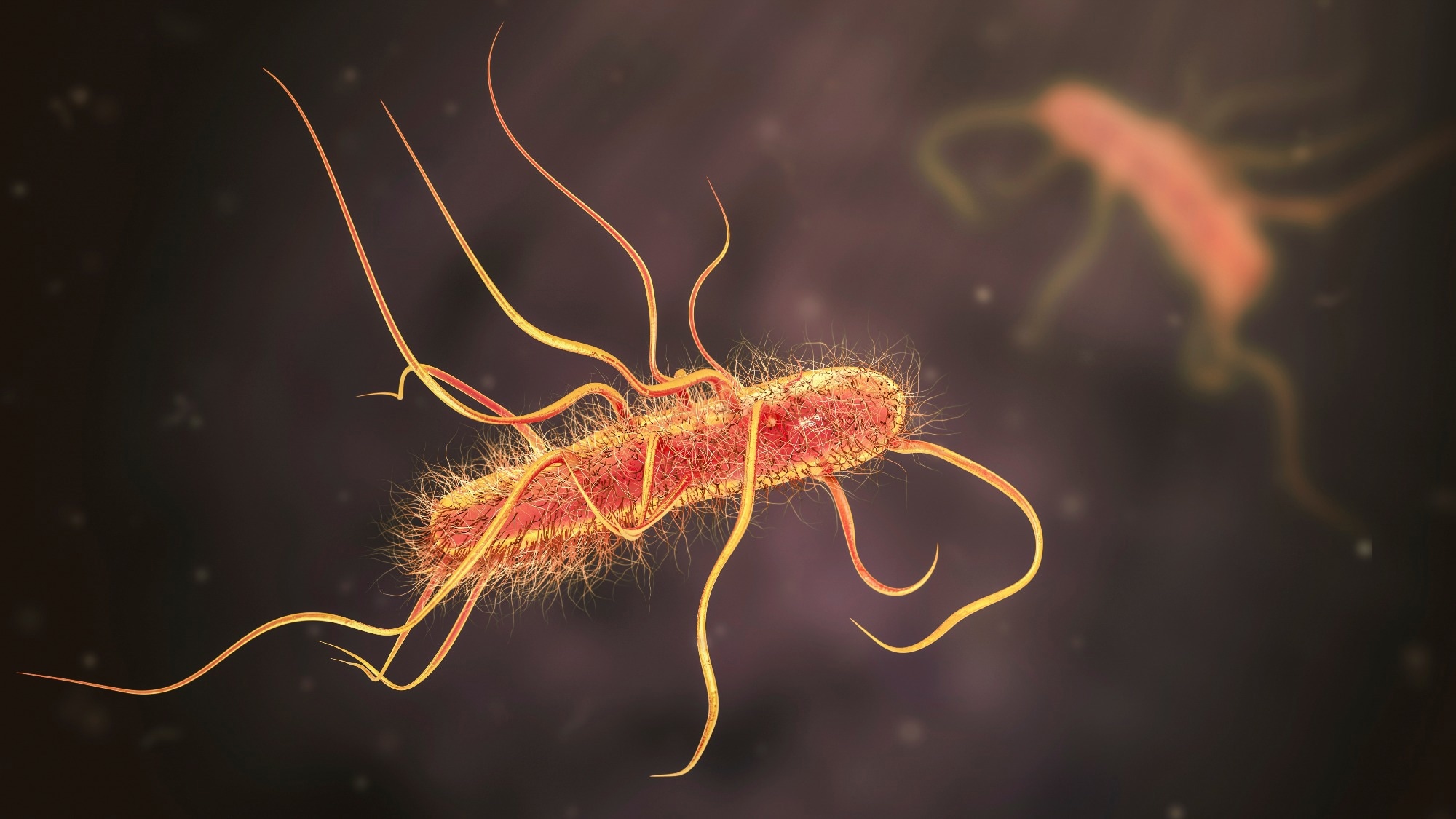Reviewed by Lauren HardakerJul 30 2025
Amyloids are perhaps best recognized as a major cause of Alzheimer’s disease.
 Image credit: Kateryna Kon/Shutterstock.com
Image credit: Kateryna Kon/Shutterstock.com
The amorphous proteins, which are prevalent throughout the human body, adhere to nerve cells like plaque, inhibiting their function and leading to a variety of neurodegenerative diseases.
According to a new University of Colorado Boulder study published this month in the journal Nature, these frequently criticized proteins also have an important role for bacteria in the environment, allowing them to fend against other “predatory bacteria.”
We discovered that bacteria all around us are using amyloids as a molecular suit of armor.
Aaron Whiteley, Senior Author and Assistant Professor, Department of Biochemistry, University of Colorado Boulder
He believes that by better understanding how bacteria fight themselves against dangers, scientists will be able to design new techniques to eliminate microorganisms that are out of control in areas like hospitals and food processing facilities. Such a study could potentially provide fresh insights into how the human immune system functions.
Whiteley added, “A lot of the cellular machinery that makes up our own immune system actually originated in bacteria a billion-plus years ago. If we can understand how bacteria are using those genes, we can better understand how humans use them too and possibly turn that knowledge into new therapies.”
War Between Bugs
In recent years, the scientific community has shown increasing interest in how bacteria defend themselves against viruses, known as phages. This area of research even led to the Nobel Prize-winning gene-editing tool, CRISPR.
Less attention has been given to how bacteria combat their own "predatory bacteria.”
Whiteley and postdoctoral researcher Hannah Ledvina focused their new investigation on Bdellovibrio bacteriovorus, a particularly ferocious predatory bacterium. The microbial cannibal, also known as “Bdello” (pronounced Dell-O), burrows its way inside other bacterial species, sucking out their resources until they starve to death before swimming away to damage again.
Bdello could be found everywhere, including the shower, the neighborhood creek, and the mouth.
Whiteley added, “They are generally harmless to humans, but they are deadly to the bacteria that make us sick. “Even E. coli has to worry about catching one of these predatory bacteria.”
Conventional thinking has claimed that Bdello are largely impenetrable, leaving other bacteria helpless to combat them. (This has made Bdello a popular choice for new initiatives to combat problem bacteria using bacteria.)
But Whiteley wondered if certain bacteria could fight against such predatory bugs and prevail.
If yes, how?
Armor Made of Amyloid
The study team gathered a large collection of unusual E. coli strains from different parts of the world, such as a lizard’s guts, a patient’s urinary tract in Sweden, and scat samples from kangaroos and leopards, to find out.
After that, they unleashed Bdello on the bacteria.
“We were blown away. We found that about one-third of the strains were actually resistant to Bdello,” added Whiteley.
The scientists observed how those resistant bacteria retaliated in further experiments conducted under a sophisticated microscope.
The images demonstrated unequivocally that the resistant strains fully covered themselves with curli, a kind of amyloid protein that is comparable to but distinct from the amyloids that cause Alzheimer's disease.
Through genetic sequencing and follow-up investigations, the scientists discovered that bacteria also employed curli to defend themselves against other predatory bacteria.
“We contend that the same characteristics that make amyloids a problem for humans — the fact that they are durable and hard to break down—make them an ideal suit of armor for bacteria, which they use to defend against a wide range of threats,” added Whiteley.
Know Thy Enemy
The study also implies that bacteria use amyloids to form biofilms, which are resistant bacterial thin coatings that cling to industrial machinery, medical implants, hospital equipment, and other surfaces, causing corrosion and disease.
Nowadays, scraping off a biofilm is a standard method of getting rid of it.
However, Whiteley believes that Bdello and other predatory bacterial strains could have evolved special enzymes or genetic tools that might break down biofilm and destroy that rigid barrier.
“Wherever organisms are fighting, there is biochemical innovation happening,” stated Whiteley.
In an effort to find new strategies to combat antibiotic resistance or amyloid-driven illnesses like Alzheimer's, he and his colleagues are currently investigating what such shield-busting instruments could be.
Whiteley will be observing closely as bacteria in the environment continue their microscopic battles.
“If we can understand what makes this armor so durable and what some predatory bacteria are doing to circumvent it, it could have all sorts of implications for human health,” said Whiteley.
He will be observing while the microorganisms in the surroundings fight it out.
He concluded, “If we can understand what makes this armor so durable and what some predatory bacteria are doing to circumvent it, it could have all sorts of implications for human health.”
Source:
Journal reference:
Ledvina, H. E., et al. (2025) Functional amyloid proteins confer defence against predatory bacteria. Nature. doi.org/10.1038/s41586-025-09204-7.